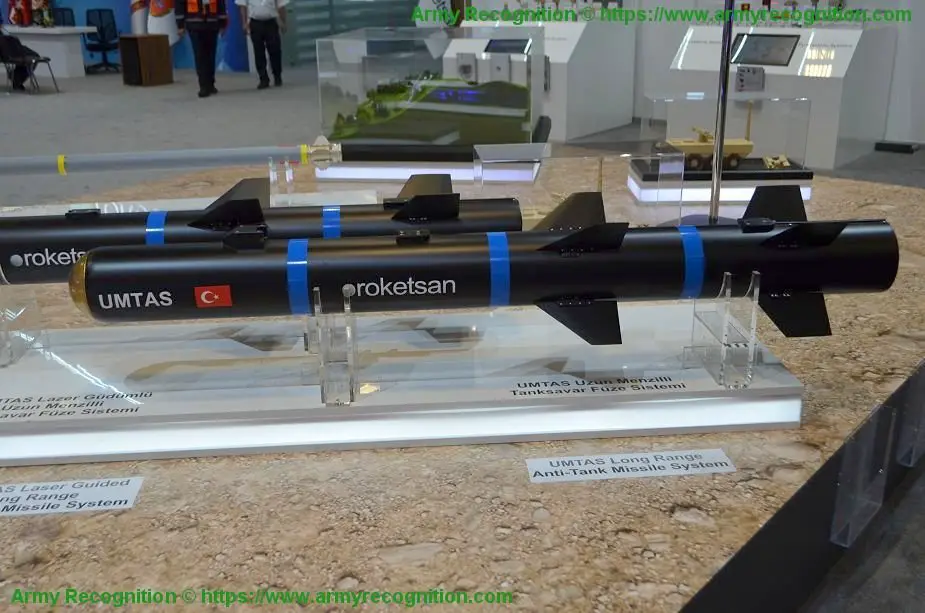Roketsan’s anti-tank missile systems, which have been developed in line with the requirements of the Turkish army, MSI reports, have reached the serial production phase and deliveries have begun.

Long-Range Anti-Tank Missile System (UMTAS) (Picture source: Army Recognition)
The product family consists of the Long-Range Anti-Tank Missile System (UMTAS), the Laser-Guided Long-Range Anti-Tank Missile System (L-UMTAS) and the Medium-Range Anti-Tank Weapon System (OMTAS), which together are able to meet all of the various needs arising in the modern battlefield. UMTAS and L-UMTAS were on display through IDEF’19, which are effective against targets at ranges of up to 8,000 m and OMTAS is effective up to 4,000 m.
The first batch of L-UMTAS missiles was delivered to TAF in 2016, and was used successfully during the EFES and the Atış Serbest (Fire at Will) military exercises in 2018.
Equipped with an imaging infrared seeker, the product and production line qualification phase of UMTAS, was completed in 2017. Following the first deliveries to be realized in parallel with the serial production, the missile is expected to enter the inventory in 2019. The qualification phase of OMTAS was completed in 2016 for the product and production line, and the missile is now ready for serial production. Work is continuing for the integration of UMTAS, L-UMTAS and OMTAS onto armored vehicles and land platforms, and for the integration of UMTAS and L-UMTAS onto rotary-wing platforms and naval platforms.
Roketsan, states that the development of UMTAS and OMTAS allowed them to develop a product family that will serve their users for many years. “What really counts in anti-tank missiles is not only the ability to neutralize improving armor technologies but also to respond to any improving threat. In addition to their antitank capabilities, which is their main mission, UMTAS and OMTAS have been designed to be effective against all ground or surface threats,” he said.














